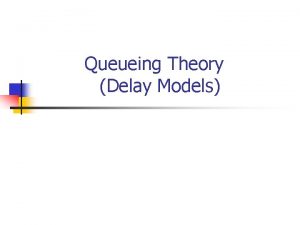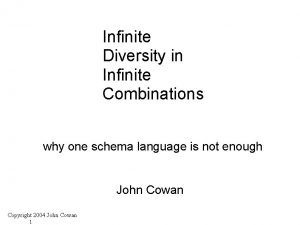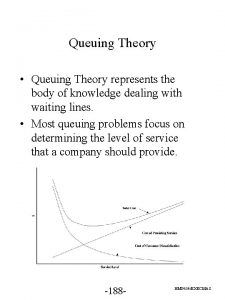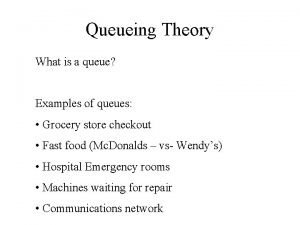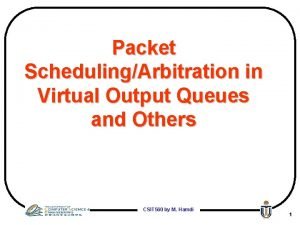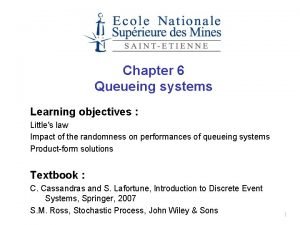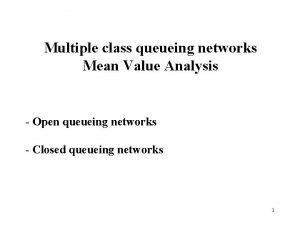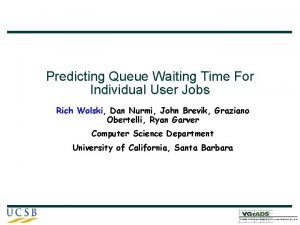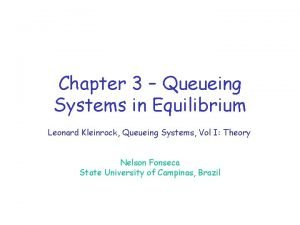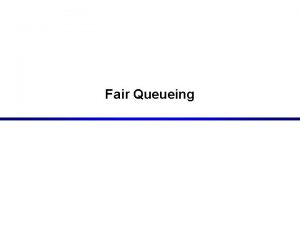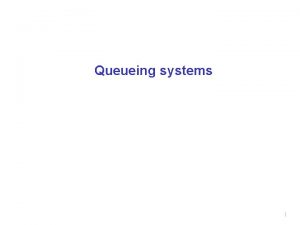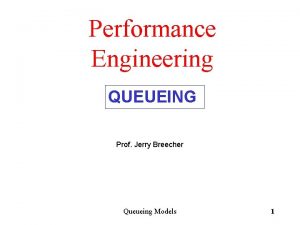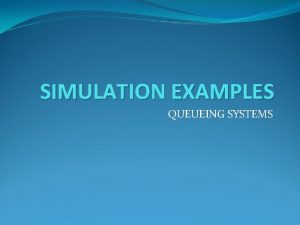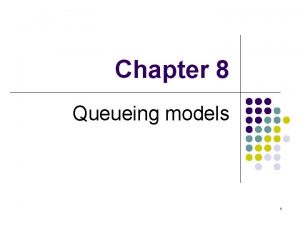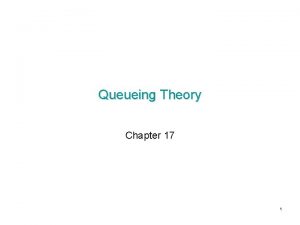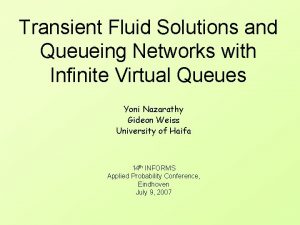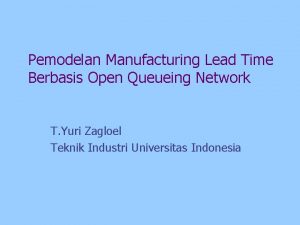Queueing Network Model Single Class Model Open Infinite












- Slides: 12

Queueing Network Model

Single Class Model • • Open - Infinite stream of arriving customers Closed - Finite population eg Intranet users Indistinguishable customers Queuing Service Center – Users compete for service

Single Class Model (cont. ) • Delay Service Center – Each customer allocated its own server – No competition for service – e. g. data transmission over a dedicated transmission line

Single Class Model Inputs • Customer Description – Workload Intensity – l, the arrival Rate • Average number of requests in the system • Average number and think time • Service Center Description – Number of service centers i • Queueing or delay • Service Demands – Di = Vi times Si for service center i

Single Class Model Outputs • System Measures – R Average system response time – X system throughput – Q average number in the system • Service Center Measures – Ui – Ri – Xi – Qi Utilization of resource i Average residence time at resource i Throughput of the resource i Average queue length at resource i

Multiple Class Models • • Multiple customer classes Each class has its own intensity Each class has its own service demands Open model - all classes are open Closed model - all classes are closed Mixed - both open and closed classes Input and output measure aggregate and per class

Simple Server Models • Infinite Population/Infinite Queue – Variable Service Rate • Infinite Population/Finite Queue – Variable Service Rate • Finite Population – Fixed Service Rate – Variable Service Rate

Queueing Notations • Six Queueing Parameters – Arrival Process • Poisson arrivals, interarrival times are exponentially distributed M, most commonly used • Other distributions e. g. – Erlang Ek – hyperexponential Hk – Deterministic D – General G

Queueing Notations • Six Queueing Parameters – Service Time Distribution • Time spent using the resource • Commonly assumed random variables • Most common distribution exponential – Number of Servers • number of processors in the system • number of I/O channels

Queueing Notations • Six Queueing Parameters – System Capacity • Those waiting for service and those receiving • Finite • If too large then consider it infinite – Population Size • Total number of potential users • Finite • If too large then consider it infinite

Queueing Notations • Six Queueing Parameters – Service Discipline • • Order of arrival First Come, First Served (FCFS) Last Come, First Served (LCFS) Round Robin (RR) Shortest Processing Time (SPT) Shortest Remaining Processing Time (SRPT) Biggest In, First Served (BIFS)

Queueing Notations • Kendall Notation • A/S/m/B/K/SD – IID/Service Time distribution/Number of servers/System capacity/Population size/ Service Discipline – M/M/1 • IID exponential/Service times exponential/one server/infinite service capacity/infinite population/FCFS
 Queueing theory
Queueing theory Infinite diversity in infinite combinations
Infinite diversity in infinite combinations Queuing theory formula
Queuing theory formula Queueing theory examples
Queueing theory examples Virtual output queueing
Virtual output queueing Queuing theory little's law
Queuing theory little's law Queueing
Queueing Predictive queueing
Predictive queueing Kleinrock queueing systems
Kleinrock queueing systems 영국 beis
영국 beis Sisd in computer architecture
Sisd in computer architecture Single instruction single data
Single instruction single data Multi channel multi phase example
Multi channel multi phase example
